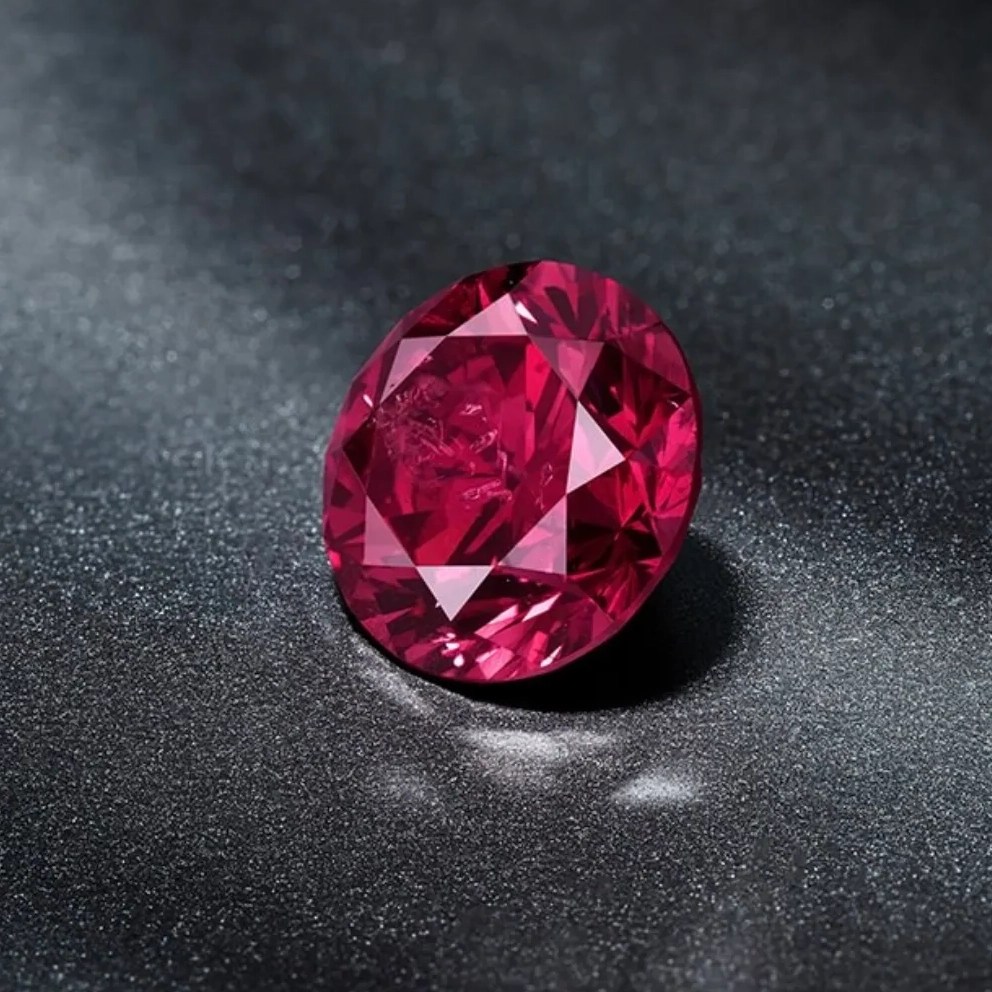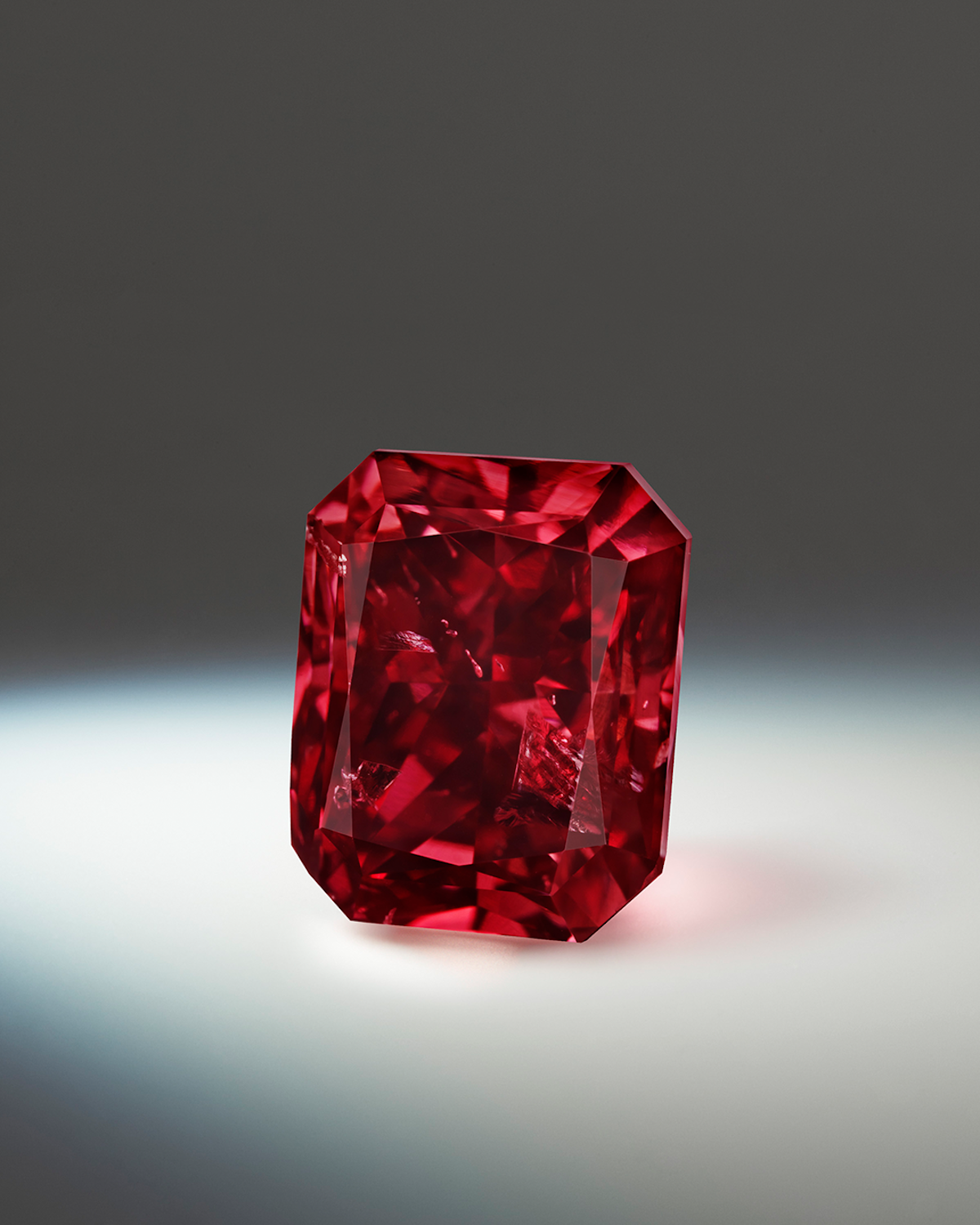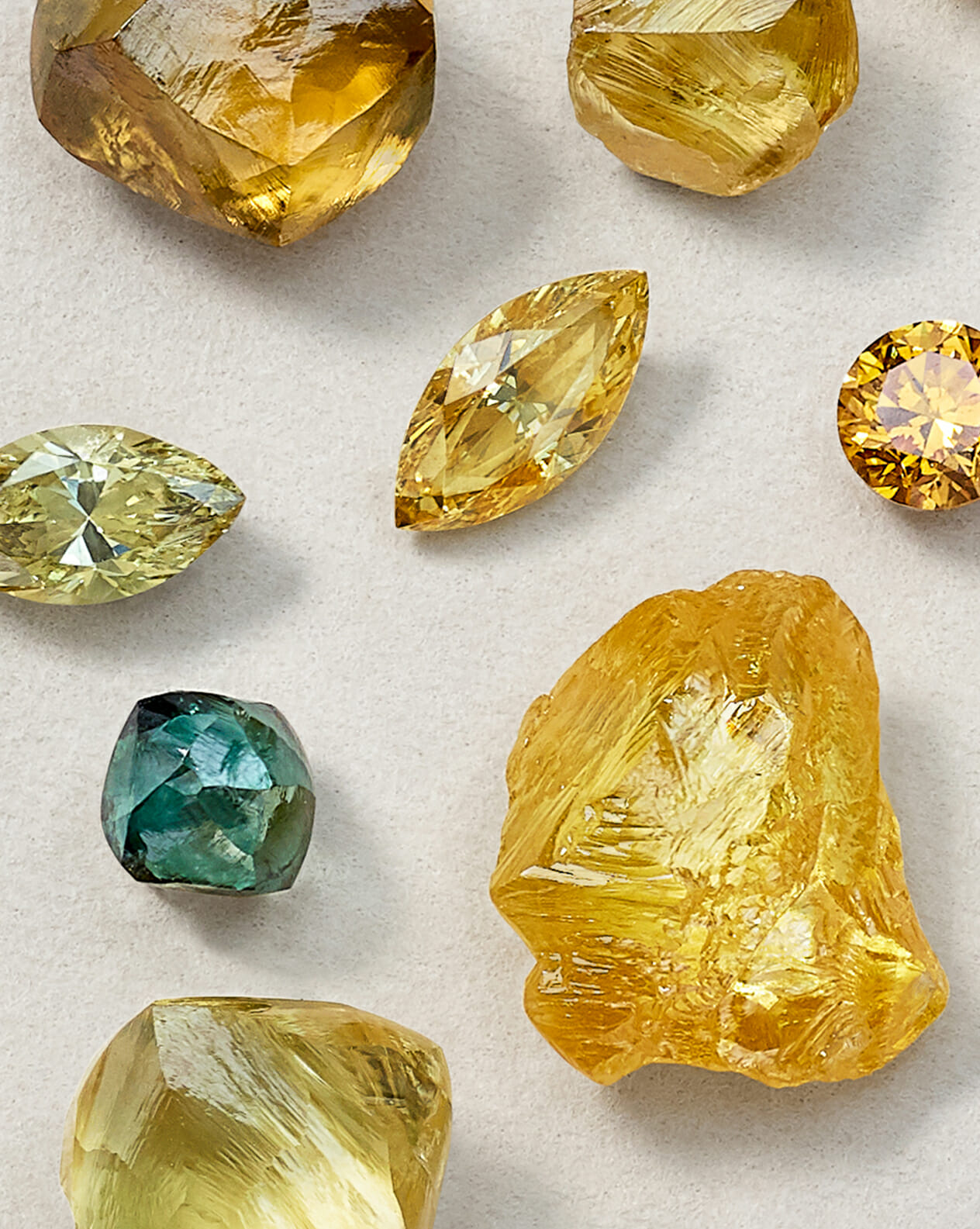Among all the colored diamonds, none are as rare as red diamonds. With its deep, fiery hues and extraordinary scarcity, red diamond stand as one of the most coveted gemstones in the world. Unlike other fancy-colored diamonds, which derive their color from trace elements, red diamonds owe their striking appearance to plastic deformation—an extremely rare structural anomaly that alters the diamond’s atomic lattice. This unique formation process has fascinated gemologists for decades. The rarity of these diamonds, combined with their breathtaking beauty, makes them a prized possession for collectors, investors, and those who appreciate nature’s most miraculous treasures.
This guide explores the origin, allure, and investment value of red diamonds—offering insight into what makes them truly exceptional.
What Is a Red Diamond?
A red diamond is a natural diamond that exhibits a pure red color with no secondary hues. Unlike other fancy-colored diamonds, which get their colors from chemical impurities (such as nitrogen in yellow diamonds or boron in blue diamonds), red diamonds achieve their color due to lattice distortions caused by immense geological pressure. Their rich, crimson hues range from a light pinkish-red to an intense deep red, often compared to the color of a fine ruby.
While red diamonds share some similarities with pink diamonds, the intensity of their color sets them apart. Most red diamonds are found in small sizes, typically under one carat, making larger stones extraordinarily rare. Their unique beauty, combined with their extreme scarcity, has solidified red diamonds as some of the most valuable gemstones in existence.
How Are Red Diamonds Created?
Unlike other fancy-colored diamonds, red diamonds owe their color to an extremely rare natural phenomenon known as plastic deformation. This process occurs when a diamond is subjected to intense pressure during its formation deep within the Earth. As a result, the diamond’s atomic structure is altered, creating defects that affect how light passes through the stone. This structural distortion is responsible for the deep red hue of these rare gems.
Because this process is so rare, red diamonds are found in only a few locations worldwide. The Argyle Mine in Australia was the most significant source of red diamonds until its closure in 2020, but they have also been discovered in Brazil, Russia, and parts of Africa. With the closure of the Argyle Mine, natural red diamonds have become even more elusive, further increasing their desirability and value.
The Rarity of Red Diamonds
When it comes to natural fancy-colored diamonds, red diamonds are by far the rarest. They are so scarce that fewer than 30 true red diamonds are known to exist worldwide. Unlike pink, blue, or yellow diamonds, which are found in multiple mines across the globe, red diamonds have been discovered in only a handful of locations.
Even within the Argyle Mine’s decades of operation, red diamonds accounted for only a tiny fraction of its total diamond production. With the mine’s closure, the already limited supply of red diamonds has dwindled, making them nearly impossible to acquire. This extreme rarity makes red diamonds highly desirable among collectors and investors, often fetching record-breaking prices at auctions.
The Value of Red Diamonds
Due to their unparalleled rarity, red diamonds are among the most expensive gemstones in the world. Prices for red diamonds can range anywhere from $1 million to over $2.5 million per carat, depending on factors such as size, intensity of color, and clarity. Unlike traditional diamonds, which are valued primarily based on the 4Cs (color, cut, clarity, and carat weight), red diamonds are valued almost entirely based on their color intensity and scarcity.
The limited supply and increasing demand for these extraordinary gemstones mean that red diamonds consistently appreciate in value. For investors, owning a red diamond is not just a luxury but also a strategic investment in one of the world’s most finite resources.
How Red Diamonds Are Graded
Like all fancy-colored diamonds, red diamonds are graded based on color intensity, hue, and saturation. The Gemological Institute of America (GIA) grades fancy-colored diamonds using categories such as Fancy Light, Fancy, Fancy Intense, Fancy Vivid, and Fancy Deep. However, because red diamonds are so rare, they do not have the same broad range of grades as other colored diamonds.
Red diamonds generally fall under the Fancy Red category, with some stones exhibiting slight secondary hues such as purplish-red or brownish-red. Unlike pink diamonds, which can vary greatly in tone, a pure red diamond is incredibly rare, making it the most valuable variation.
Famous Red Diamonds
Because red diamonds are so rare, only a few have gained worldwide recognition. Some of the most famous red diamonds include:
The Moussaieff Red Diamond
The largest known red diamond in existence, the Moussaieff Red Diamond weighs 5.11 carats. It has been graded as Fancy Red by the Gemological Institute of America (GIA), a distinction given to only the rarest diamonds. Originally discovered in Brazil, this extraordinary gemstone was later purchased by Moussaieff Jewelers, securing its place as one of the most famous and valuable diamonds in the world.
The Hancock Red Diamond
Weighing just 0.95 carats, the Hancock Red Diamond is known for its exceptionally vivid red hue. Despite its small size, it made history when it was sold at auction in 1987 for a record price per carat, setting a benchmark for red diamond values. Its remarkable color intensity and rarity make it one of the most important red diamonds ever discovered.
The Kazanjian Red Diamond
The Kazanjian Red Diamond weighs 5.05 carats and was originally discovered in South Africa. Due to its deep red color, it was initially mistaken for a ruby before being properly identified as a natural red diamond. This fascinating gemstone has a rich history, having even been hidden during World War II to prevent it from falling into enemy hands.
The DeYoung Red Diamond
Weighing 5.03 carats, the DeYoung Red Diamond is one of the largest red diamonds in the world. It is currently housed in the Smithsonian Institution, where it is admired by gem enthusiasts and researchers alike. Its rarity and exceptional beauty make it a significant part of the Smithsonian’s world-class diamond collection.
Each of these diamonds showcases the unparalleled beauty and scarcity of red diamonds, further emphasizing why they are considered among the world’s most extraordinary gemstones.
The Legacy of Red Diamonds
A red diamond is more than just a gemstone—it is a true phenomenon of nature. With only a handful known to exist, these diamonds represent the pinnacle of rarity, beauty, and luxury. As the supply of natural red diamonds continues to shrink, their value will only increase, making them some of the most coveted treasures in the world of fine jewelry. Whether admired in museum collections, auctioned for record-breaking prices, or worn by the world’s elite, red diamonds remain a testament to the extraordinary forces that shape our planet’s most exquisite gems.








